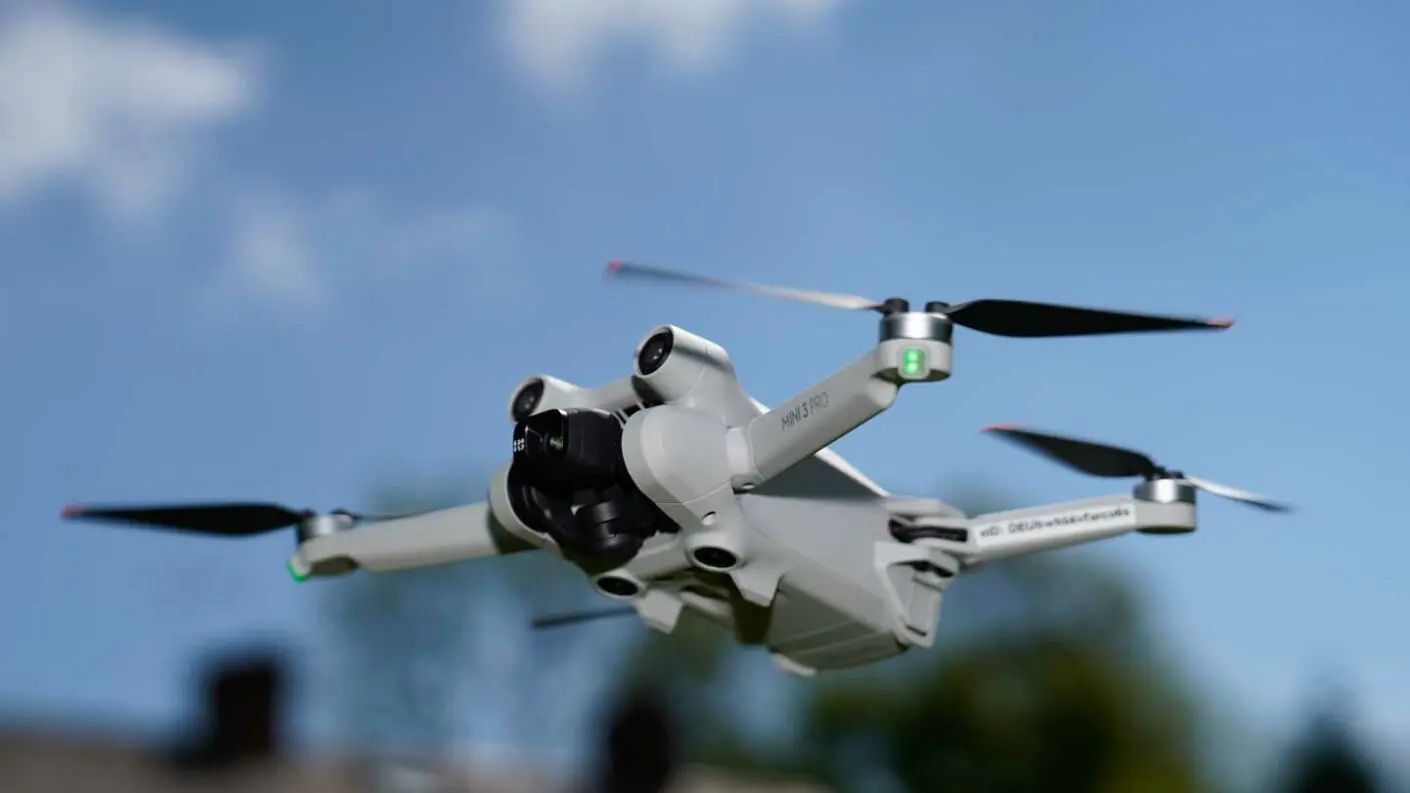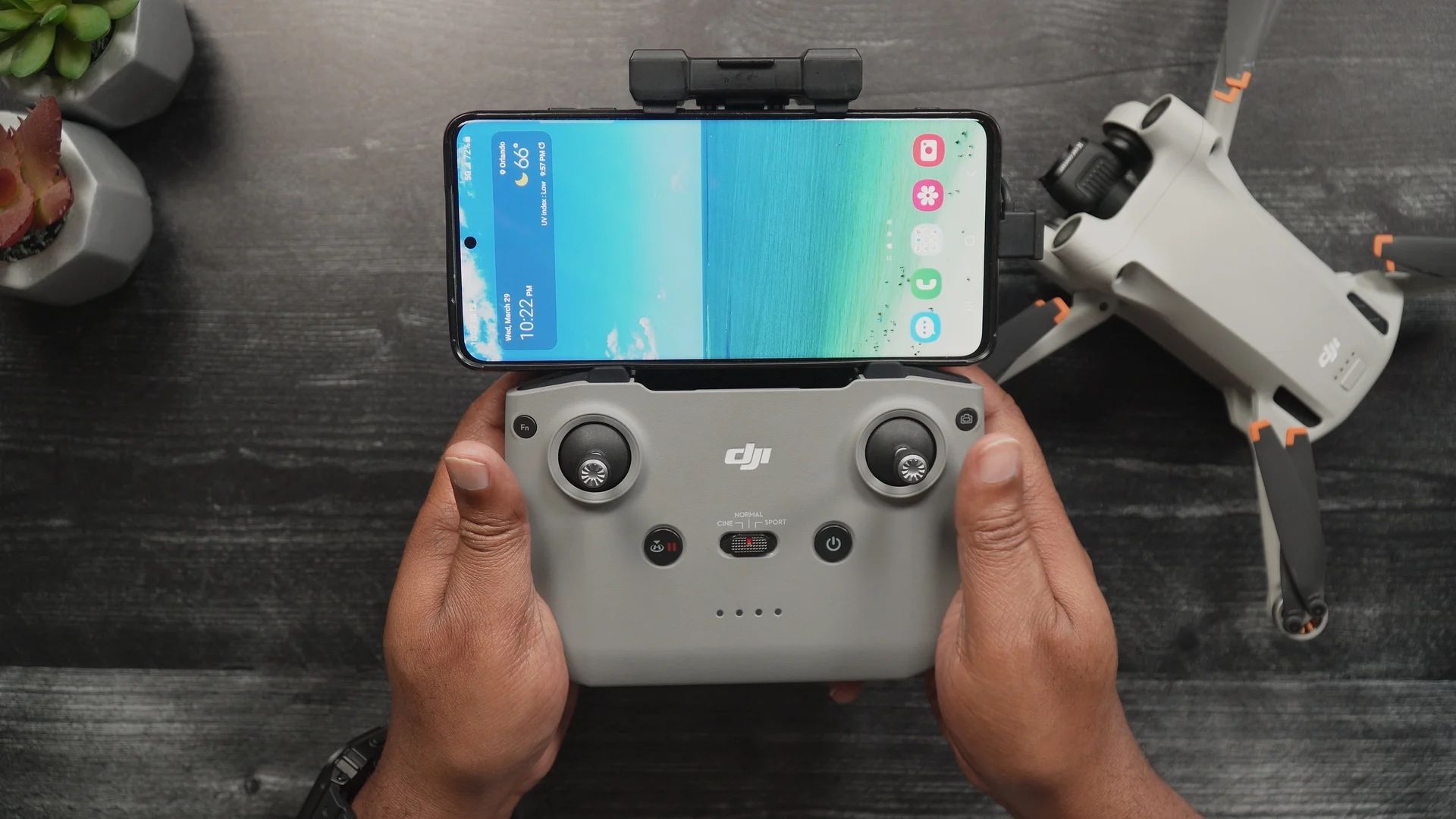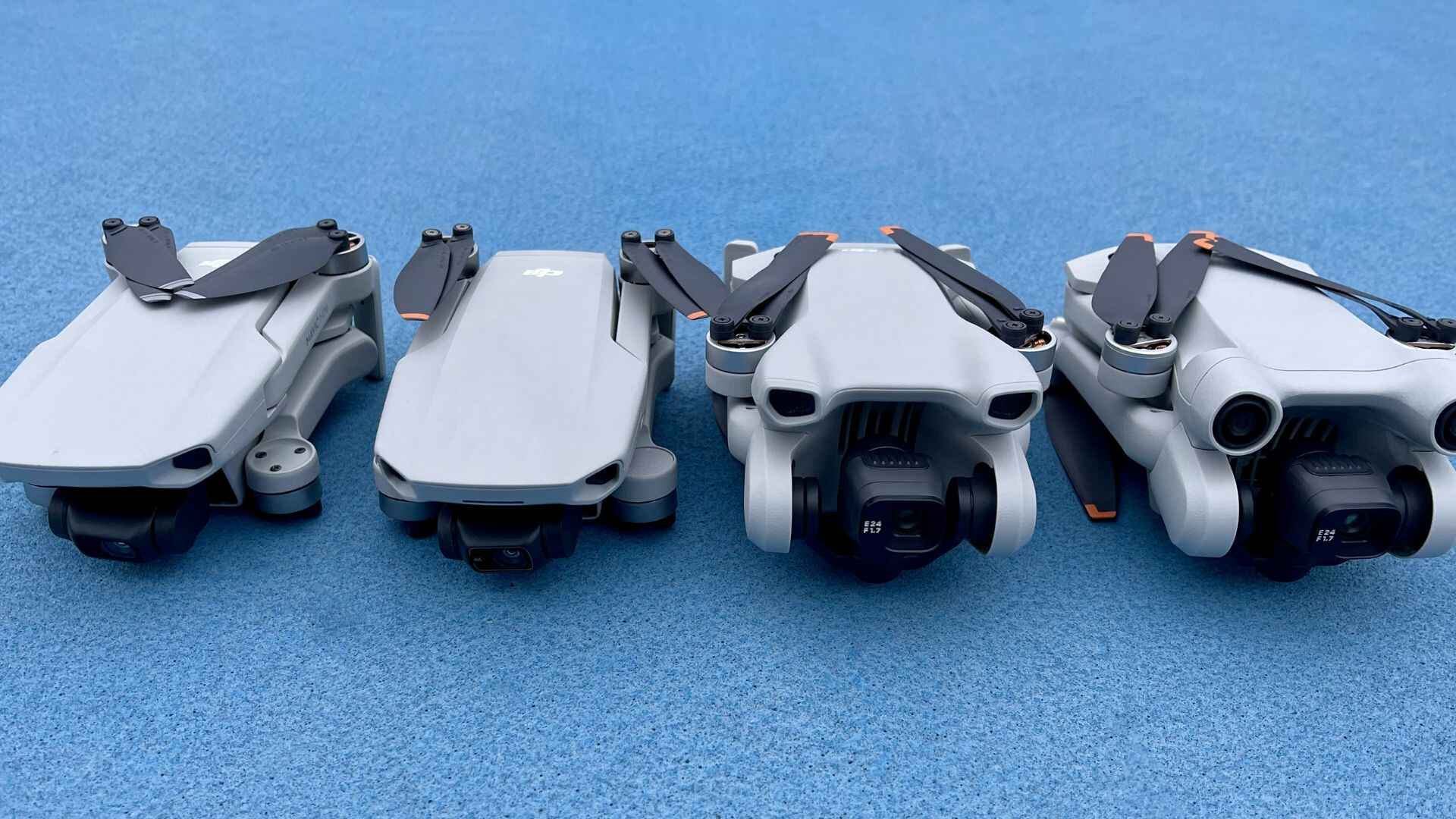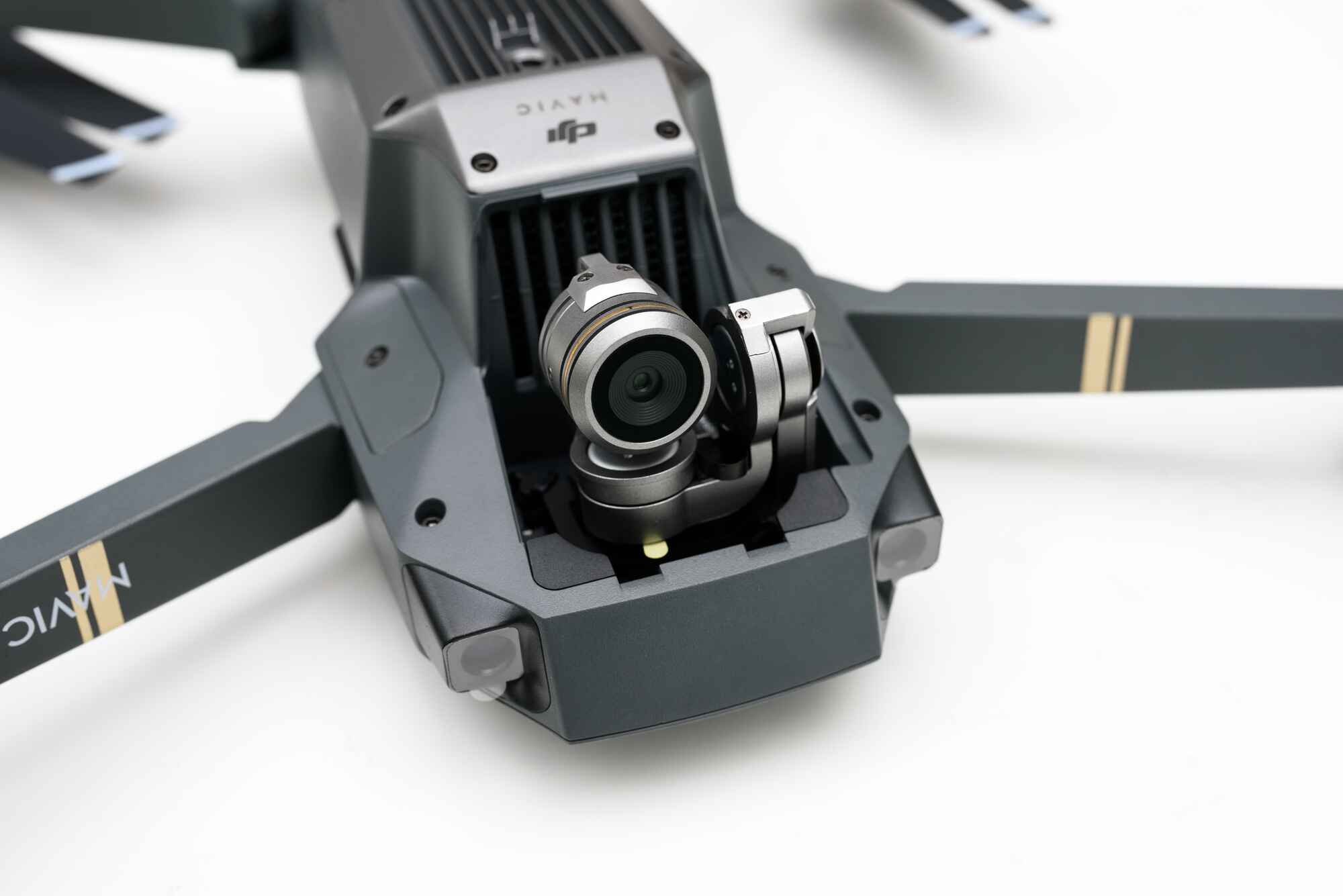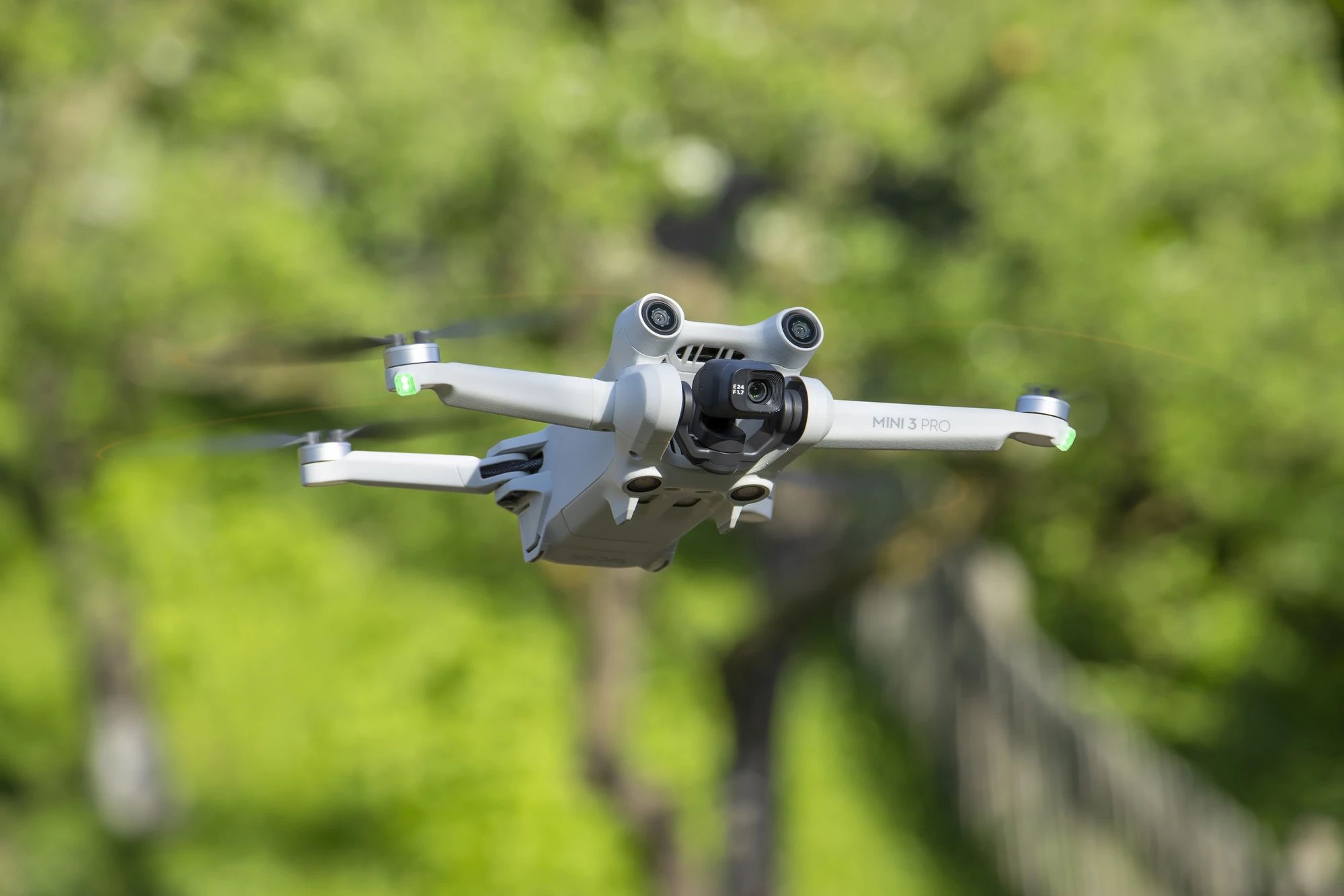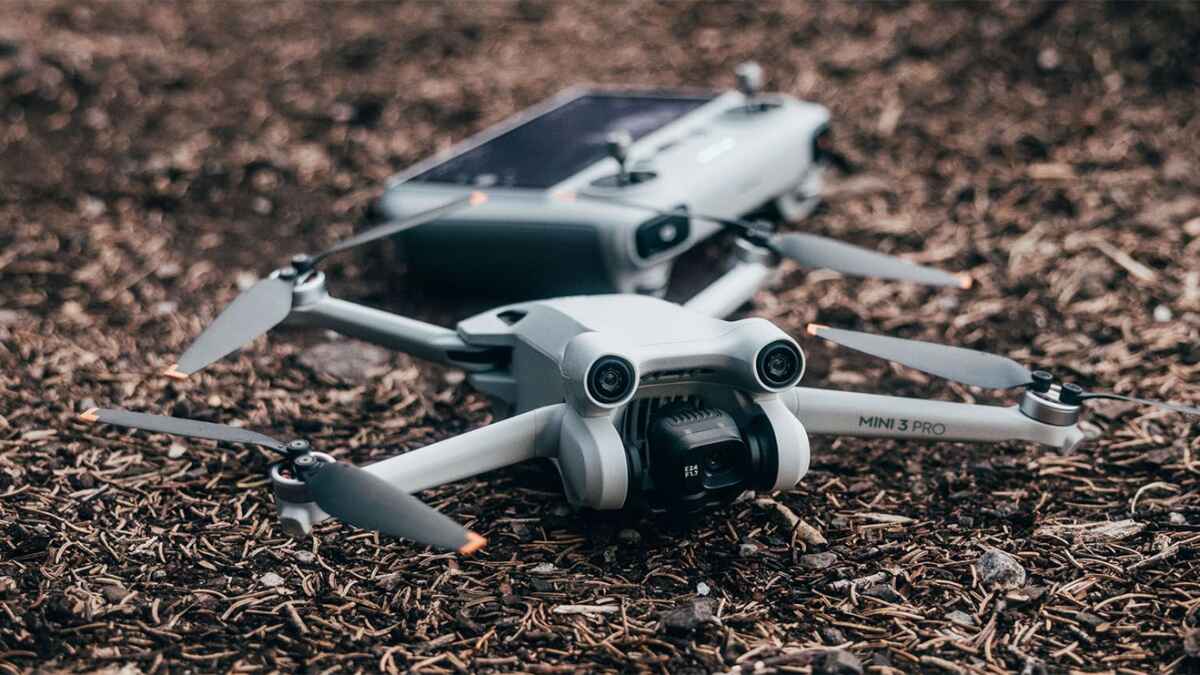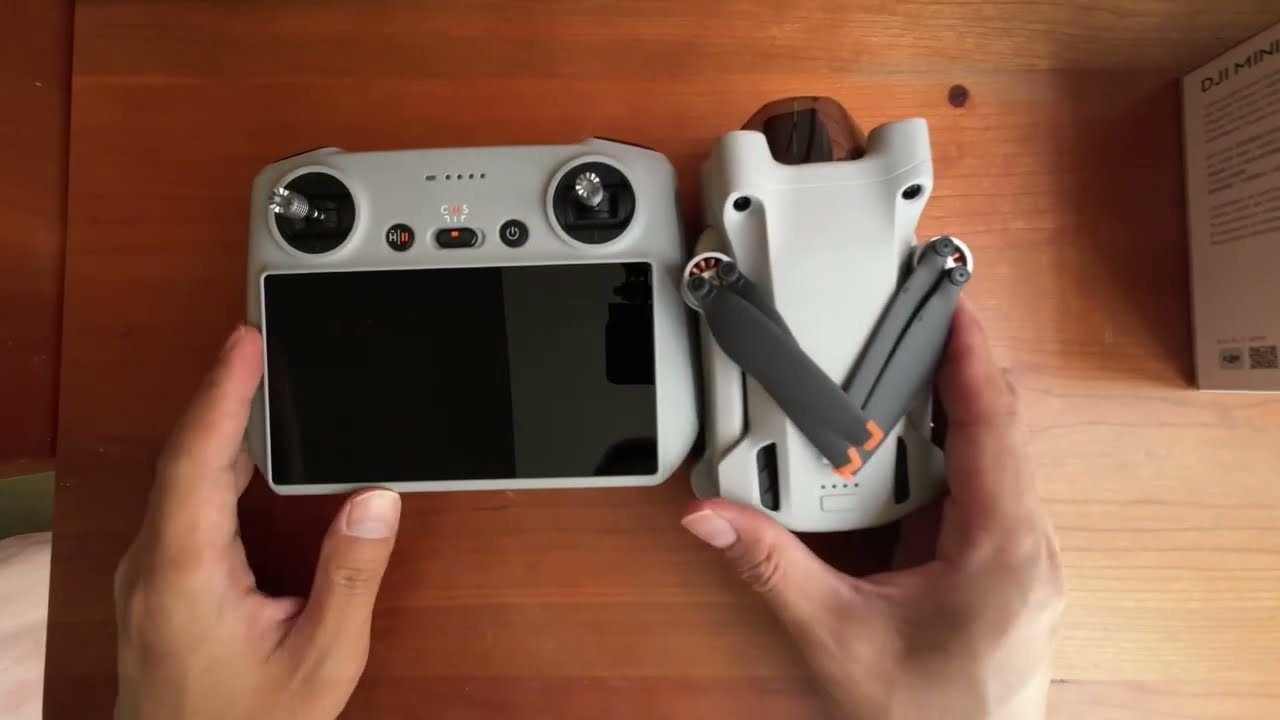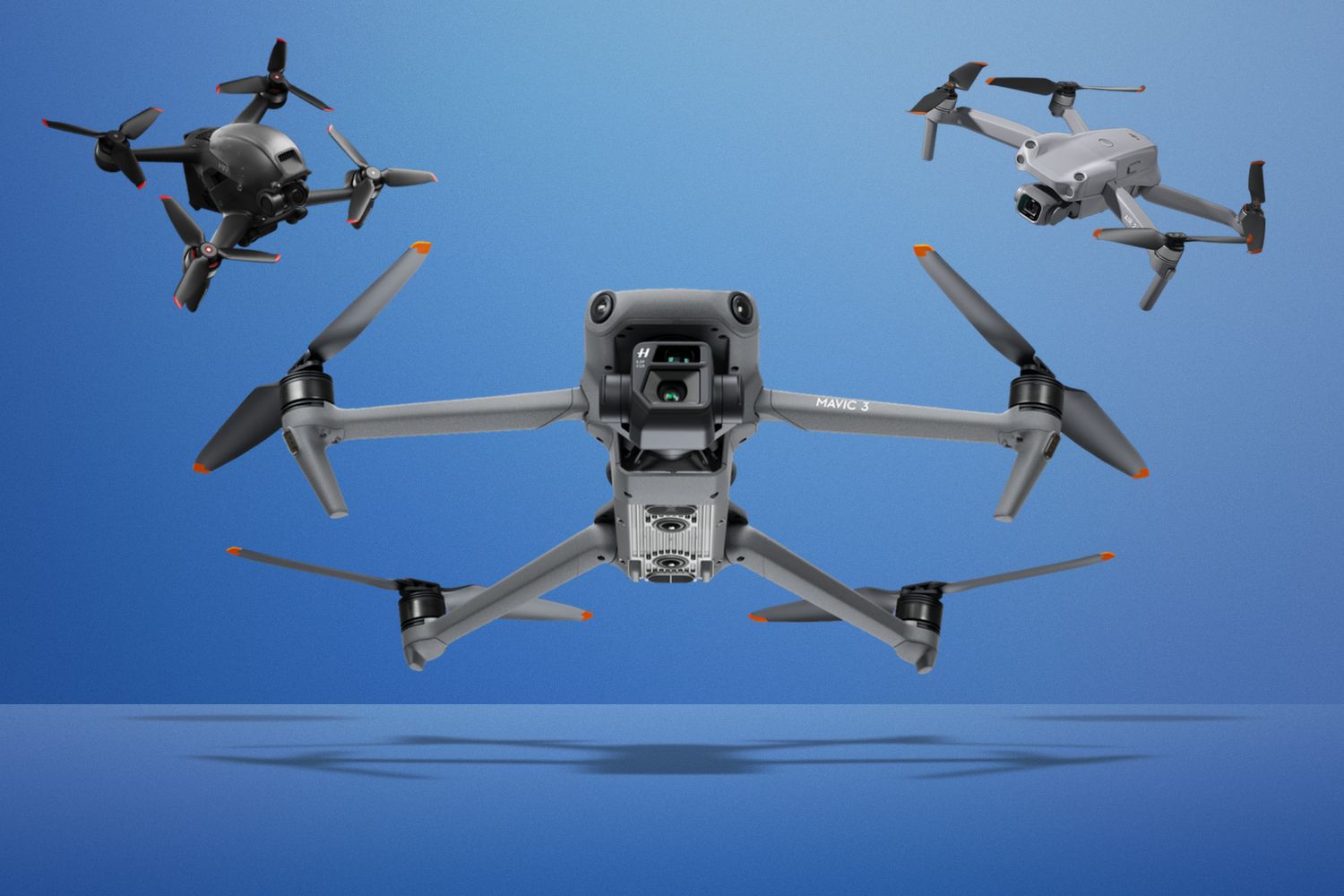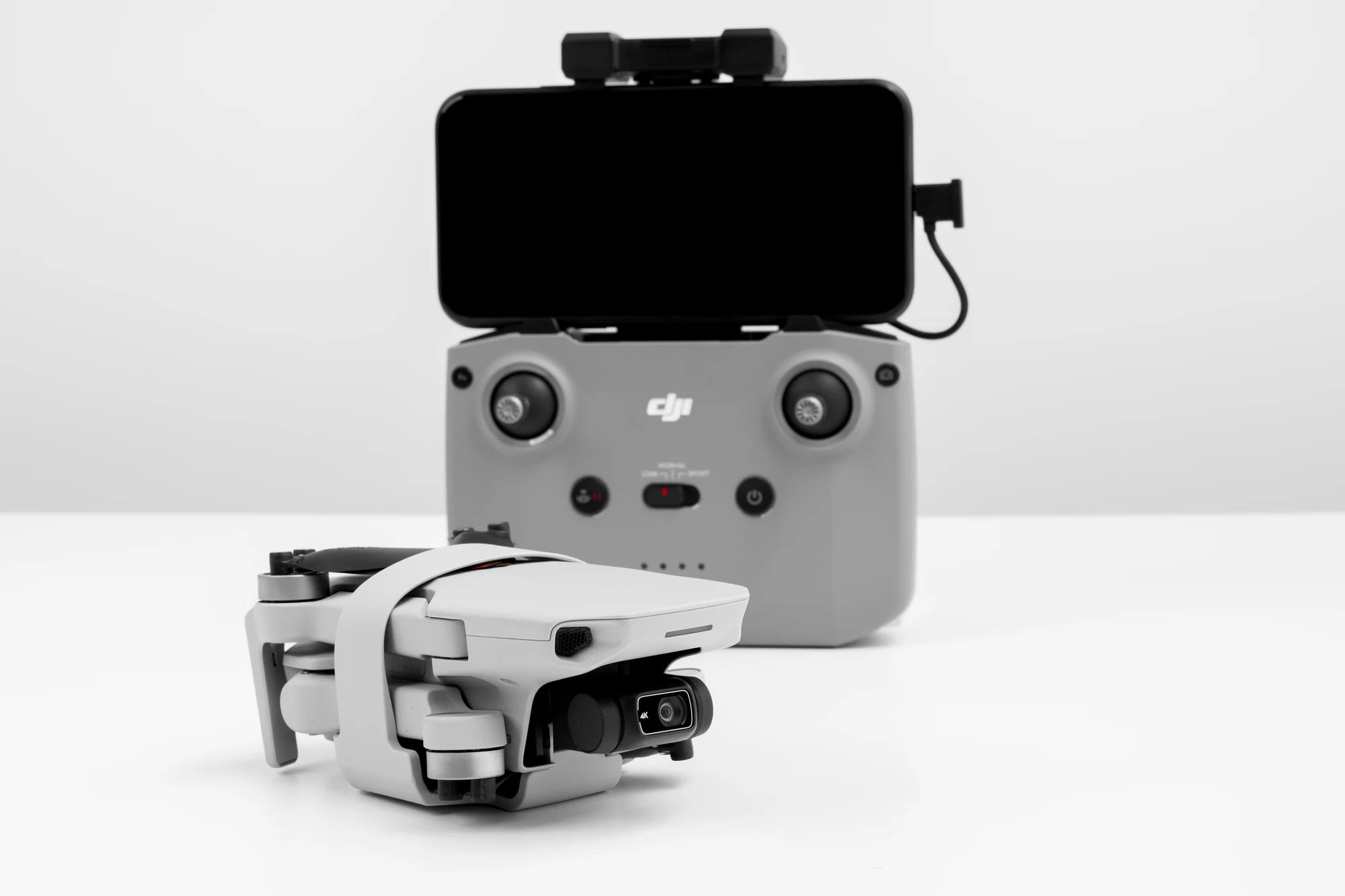Introduction
With the advancement of drone technology, the DJI Mini 3 Pro has captured the attention of aerial photography enthusiasts around the world. This compact and portable drone offers impressive features and capabilities, making it a popular choice for both beginners and experienced pilots. One of the key factors to consider when choosing a drone is its flight range, including how high it can fly.
In this article, we will explore the flight range of the DJI Mini 3 Pro and discuss the factors that affect its flight height and range. Additionally, we will dive into any legal restrictions that may impact the altitude at which you can fly this drone. Whether you are a professional photographer looking to capture stunning aerial footage or a hobbyist seeking new heights, understanding the capabilities and limitations of the DJI Mini 3 Pro will be crucial for a successful and enjoyable flight experience.
The DJI Mini 3 Pro is equipped with cutting-edge technology and a robust build, allowing it to soar to impressive heights. However, it is important to note that there are several factors that can influence its flight altitude and range. Understanding these factors will enable you to make informed decisions and maximize the drone’s capabilities while ensuring safety and compliance with regulations.
So, let’s dive into the fascinating world of the DJI Mini 3 Pro and explore how high this remarkable drone can fly and the factors that come into play when pushing its limits.
Overview of the DJI Mini 3 Pro
The DJI Mini 3 Pro is a powerful yet compact drone that packs an array of features and functionalities into its lightweight frame. Designed by industry leader DJI, this drone is perfect for both beginners and seasoned pilots looking to capture breathtaking aerial shots.
One of the standout features of the DJI Mini 3 Pro is its impressive flight time. With a maximum flight time of up to 30 minutes, this drone allows you to capture stunning visuals without having to worry about constantly landing and recharging. This extended flight duration gives you ample time to explore various locations and angles for your photography or videography needs.
In terms of build and design, the DJI Mini 3 Pro is incredibly portable and convenient for travel. Weighing just under 250 grams, it falls under the FAA’s lowest weight class, which means it is exempt from certain registration requirements in many countries. Its lightweight and compact design make it easy to carry around in a backpack or pocket, ensuring that you can take it with you wherever you go.
The DJI Mini 3 Pro is also equipped with advanced flight modes and intelligent features that enhance the overall flying experience. The drone’s GPS capability allows for precise positioning and accurate hovering, ensuring stable and smooth flights. It also features intelligent flight modes such as Follow Me and Waypoint Navigation, which enable the drone to autonomously follow a subject or fly along a designated route.
Another notable feature of the DJI Mini 3 Pro is its camera quality. The drone is equipped with a high-resolution camera capable of capturing stunning photos and videos in up to 4K resolution. With a three-axis gimbal, the camera offers excellent stabilization, resulting in smooth and professional-looking footage.
Overall, the DJI Mini 3 Pro is a versatile and feature-packed drone that offers an incredible flying experience. Its lightweight and portable design, combined with its advanced features and impressive camera capabilities, make it a top choice for aerial photographers and videographers of all skill levels.
Flight Range of the DJI Mini 3 Pro
The flight range of the DJI Mini 3 Pro is an important consideration for any drone pilot. It refers to the maximum distance the drone can travel from the remote controller before losing connection. The DJI Mini 3 Pro boasts an impressive flight range that allows pilots to explore vast areas and capture stunning aerial footage.
On average, the DJI Mini 3 Pro has a maximum flight range of around 10 kilometers. This means that you can fly the drone up to 10 kilometers away from your location while maintaining a stable connection. However, it’s important to note that various factors can affect the actual flight range, including environmental conditions and interference.
One of the primary factors influencing the flight range is the strength of the drone’s signal transmission system. The DJI Mini 3 Pro utilizes advanced technology to ensure a reliable and stable connection between the drone and the remote controller. This helps to extend the range and improve the overall flight experience.
Another factor to consider is the presence of obstacles or interference in the flight path. Trees, buildings, and other structures can interfere with the signal and reduce the effective range of the drone. It’s important to maintain a clear line of sight between the drone and the remote controller to maximize the flight range.
In addition to the flight range in terms of distance, it’s essential to consider the drone’s maximum flight altitude. The DJI Mini 3 Pro has a maximum altitude of approximately 4,000 meters above sea level. This allows pilots to capture breathtaking aerial shots from a considerable height.
However, it’s important to note that flight regulations vary between regions and countries. Some areas may have restrictions on the maximum altitude that drones can fly. It’s crucial to familiarize yourself with local regulations and fly within the allowed limits to ensure a safe and legal flight.
In summary, the DJI Mini 3 Pro offers an impressive flight range that allows pilots to explore vast areas and capture stunning aerial footage. With a maximum flight range of approximately 10 kilometers and a maximum altitude of 4,000 meters, this drone provides the flexibility and freedom to unleash your creativity in the sky.
Factors Affecting Flight Height and Range
Several factors can influence the flight height and range of the DJI Mini 3 Pro drone. Understanding these factors is essential for maximizing the drone’s capabilities and ensuring safe and enjoyable flights. Let’s explore the key elements that can affect the height and range of the DJI Mini 3 Pro:
1. Signal Interference: Signal interference from other electronic devices or structures can disrupt the connection between the drone and the remote controller. This interference can reduce the effective range and limit the drone’s flight height. It is essential to fly in an area with minimal signal interference to maintain a stable connection and maximize the flight range.
2. Environmental Conditions: Environmental factors such as wind speed and temperature can impact the performance of the drone. Strong winds can affect the stability and control of the drone, reducing its flight range and height. Similarly, extreme temperatures can affect battery performance and decrease the overall flight time. It is advisable to check weather conditions before flying and avoid flying in adverse weather conditions.
3. Battery Life: The battery life of the DJI Mini 3 Pro directly impacts its flight time and range. As the battery drains, the drone’s performance can be affected, and the flight range may be reduced. It is crucial to ensure that the battery is fully charged before each flight and consider carrying spare batteries for extended flight sessions.
4. Flight Mode and Settings: The flight mode and settings selected on the drone can affect its flight height and range. For example, flying in Sport mode might provide faster speeds but reduce battery life and flight range. Adjusting settings such as camera resolution or frame rate can also impact the drone’s overall performance. It is important to consider the desired outcome and adjust the settings accordingly.
5. Regulations and Airspace Restrictions: It is crucial to be aware of and adhere to local regulations and airspace restrictions when flying the DJI Mini 3 Pro. Many regions have specific height limitations for drones to ensure safety and privacy. Understanding and abiding by these regulations will help prevent any legal issues and ensure responsible drone operation.
By considering these factors and taking the necessary precautions, you can optimize the flight height and range of the DJI Mini 3 Pro. Remember to fly in suitable weather conditions, maintain a clear line of sight, monitor battery levels, and comply with local regulations to enjoy safe and successful flights with your drone.
Legal Restrictions on Drone Height
When it comes to flying drones, it is essential to be aware of the legal restrictions and regulations regarding height limitations. Different countries and regions have varying rules in place to ensure the safety and privacy of individuals on the ground and other airspace users. Let’s explore some common legal restrictions on drone height:
1. Maximum Altitude: Most countries have set a maximum altitude limit for drone flights. The limit typically ranges from 90 meters (300 feet) to 120 meters (400 feet) above ground level. This restriction aims to avoid collisions with manned aircraft and maintain a safe distance from infrastructure and buildings. It’s crucial to abide by these altitude restrictions to prevent any potential hazards and comply with the law.
2. Restricted Airspace: Certain areas, such as airports, military bases, and national parks, have restricted airspace where drone flights are prohibited or heavily regulated. These restrictions are in place to protect the integrity of critical infrastructure and ensure the safety of aircraft operations. It is essential to check local regulations and airspace maps to identify areas where drone flights are not permitted.
3. Special Permissions and Licenses: In some cases, obtaining special permissions or licenses may be required to fly drones at higher altitudes or in restricted airspace. These permissions are usually granted on a case-by-case basis and may involve providing information about the flight plan, purpose, and safety measures to the relevant aviation authorities. It is crucial to research and follow the necessary procedures to ensure legal compliance.
4. Privacy Laws: Privacy laws may also come into play when it comes to drone flights. It is important to respect the privacy of individuals and avoid flying drones over private property without permission. Additionally, capturing images or videos that invade someone’s privacy or infringe upon their personal space can lead to legal consequences. Familiarize yourself with the privacy laws in your area and exercise responsible drone operation.
Understanding and adhering to these legal restrictions on drone height is crucial for responsible and safe drone operation. Violating these regulations can have serious consequences, including fines, the seizure of equipment, or legal action. It is essential to research and familiarize yourself with the specific regulations in your region and always prioritize safety and compliance when operating your DJI Mini 3 Pro or any other drone.
Tips for Flying the DJI Mini 3 Pro at High Altitudes
Flying the DJI Mini 3 Pro at high altitudes can be an exhilarating experience, but it also requires careful planning and consideration to ensure a safe and successful flight. Here are some tips to keep in mind when flying your DJI Mini 3 Pro at high altitudes:
1. Check Local Regulations: Before flying at high altitudes, it is crucial to check local regulations regarding drone flights. Some areas may have specific restrictions on maximum altitude or require special permissions for flying at higher elevations. Make sure you are aware of and comply with these regulations to avoid any legal issues.
2. Monitor Weather Conditions: Weather conditions can significantly impact the performance and safety of your drone at high altitudes. Strong winds, low temperatures, or adverse weather conditions can affect stability and control. Always check weather forecasts and avoid flying in inclement weather or high winds that can pose risks to both your drone and others in the surrounding area.
3. Ensure Battery Performance: While flying at higher altitudes, your drone may consume more power due to increased air density and possibly stronger winds. It is essential to have fully charged batteries and consider carrying extra ones to ensure an adequate flight time. Monitor your battery levels closely and be prepared for a shorter flight duration than usual.
4. Maintain Line of Sight: At higher altitudes, it can be challenging to maintain a clear line of sight with your drone. However, it is crucial to always keep visual contact with your drone to ensure safe operation and avoid potential collisions. Stay attentive and aware of your surroundings, especially when flying at greater distances or in more challenging terrain.
5. Fly in GPS Mode: Flying in GPS mode can enhance stability and control, especially at higher altitudes. This mode enables the drone to use GPS signals for precise positioning and maintains stability in turbulent conditions. It is recommended to fly in GPS mode when exploring higher altitudes to ensure a safe and controlled flight experience.
6. Plan Your Flight Path: Before taking off, plan your flight path carefully. Identify any potential hazards such as trees, power lines, or other obstacles that may be present at higher altitudes. Utilize maps and satellite imagery to familiarize yourself with the area and have a clear understanding of the terrain and potential challenges you may encounter.
7. Stay Mindful of Signal Strength: Maintaining a strong and stable connection between the drone and remote controller is crucial at higher altitudes. Make sure you have a reliable signal before ascending to greater heights. Keep an eye on the signal strength indicator on your controller and avoid flying in areas with high interference that may weaken the connection.
By following these tips, you can safely and effectively fly your DJI Mini 3 Pro at high altitudes. Always prioritize safety and adhere to regulations to ensure an enjoyable and incident-free flight experience.
Conclusion
The DJI Mini 3 Pro is an impressive drone that offers an excellent flight range and the ability to fly at high altitudes. Understanding the capabilities and limitations of the drone is crucial for a safe and enjoyable flying experience. Throughout this article, we have explored various aspects of the DJI Mini 3 Pro’s flight range, factors influencing flight height, legal restrictions, and tips for flying at high altitudes.
The DJI Mini 3 Pro boasts a flight range of approximately 10 kilometers, allowing pilots to explore vast areas and capture stunning aerial footage. Factors like signal interference, environmental conditions, battery life, and flight mode settings can influence the drone’s flight height and range. It is important to consider these factors and take the necessary precautions to ensure optimal performance and safety.
Legal restrictions on drone height vary between regions and countries, with maximum altitude limitations in place to ensure safety and privacy. It is essential to familiarize yourself with and comply with local regulations, obtain necessary permissions if required, and respect privacy laws when operating the DJI Mini 3 Pro.
When flying the DJI Mini 3 Pro at high altitudes, it is crucial to monitor weather conditions, ensure battery performance, and maintain a clear line of sight with the drone. Flying in GPS mode and planning your flight path can enhance stability and control, while staying mindful of signal strength is essential for a reliable and safe flight experience.
In conclusion, the DJI Mini 3 Pro provides an impressive flight range and the ability to fly at high altitudes, making it a versatile tool for capturing stunning aerial shots. By understanding the drone’s capabilities, considering the factors that affect flight height and range, and complying with legal regulations, you can enjoy the full potential of the DJI Mini 3 Pro while ensuring safety and responsible drone operation.







